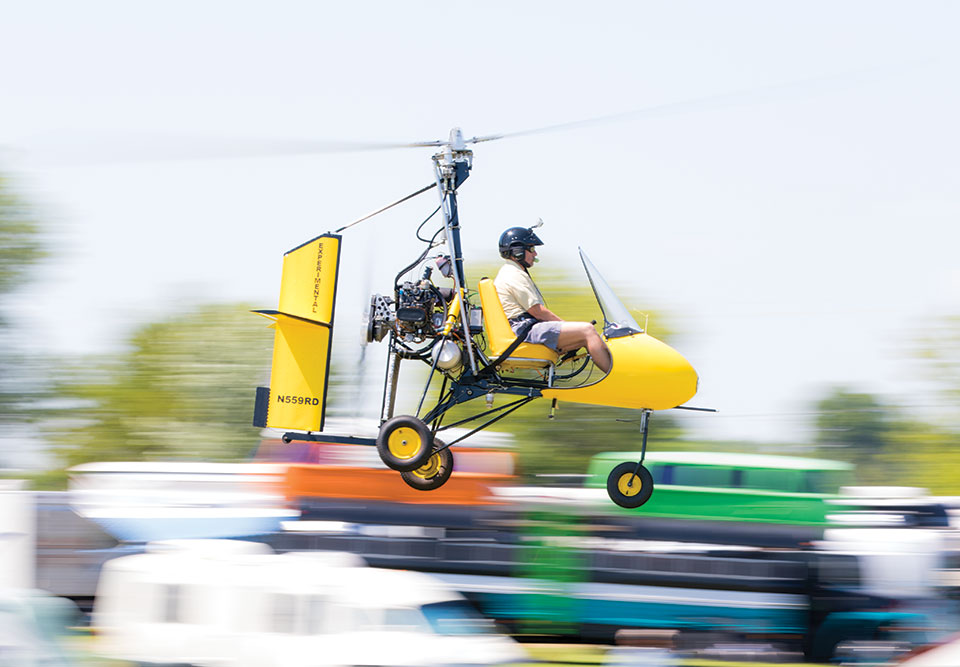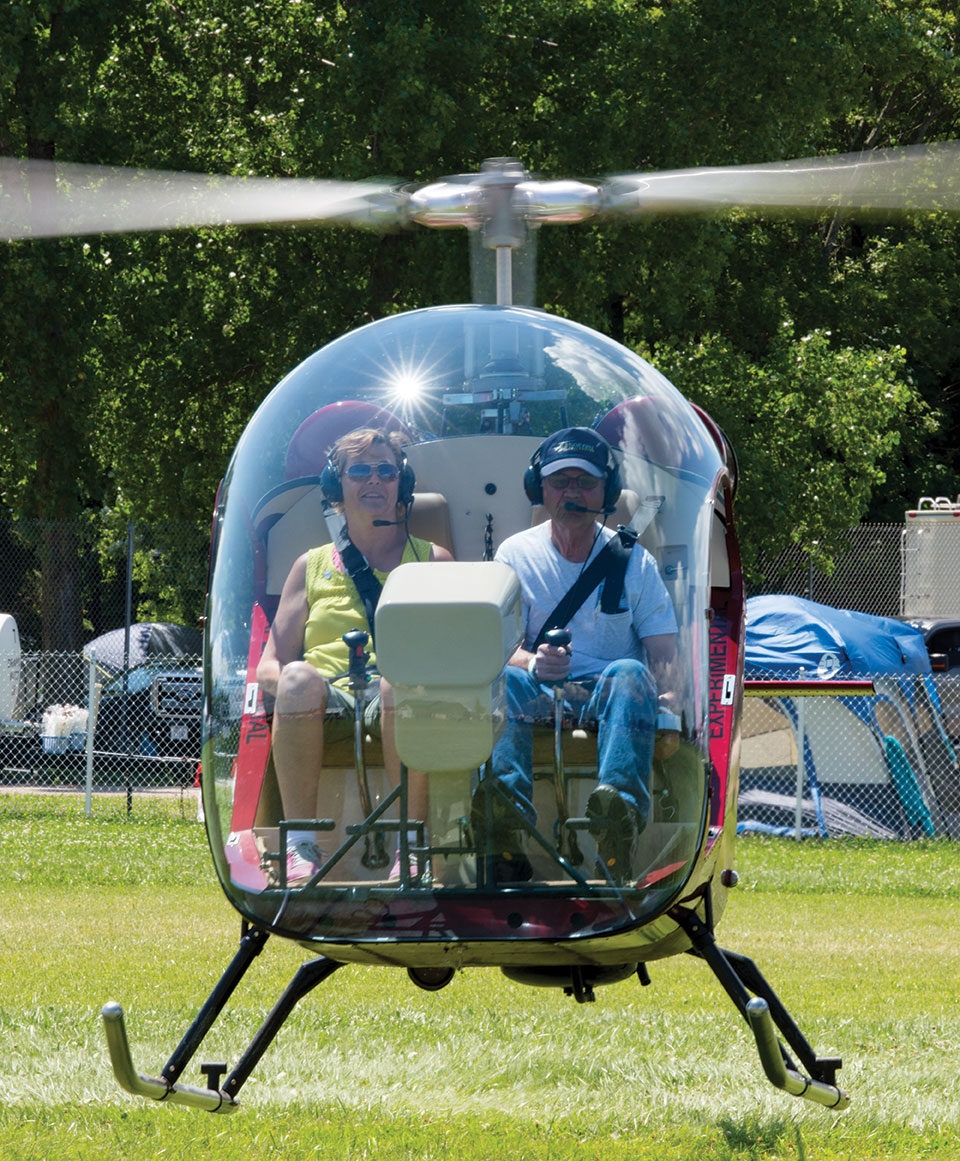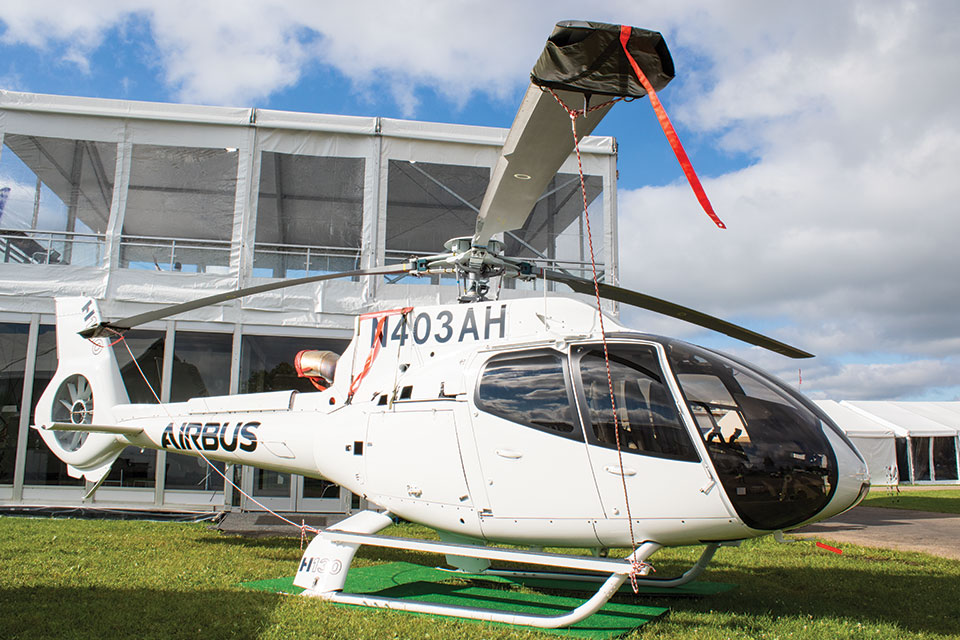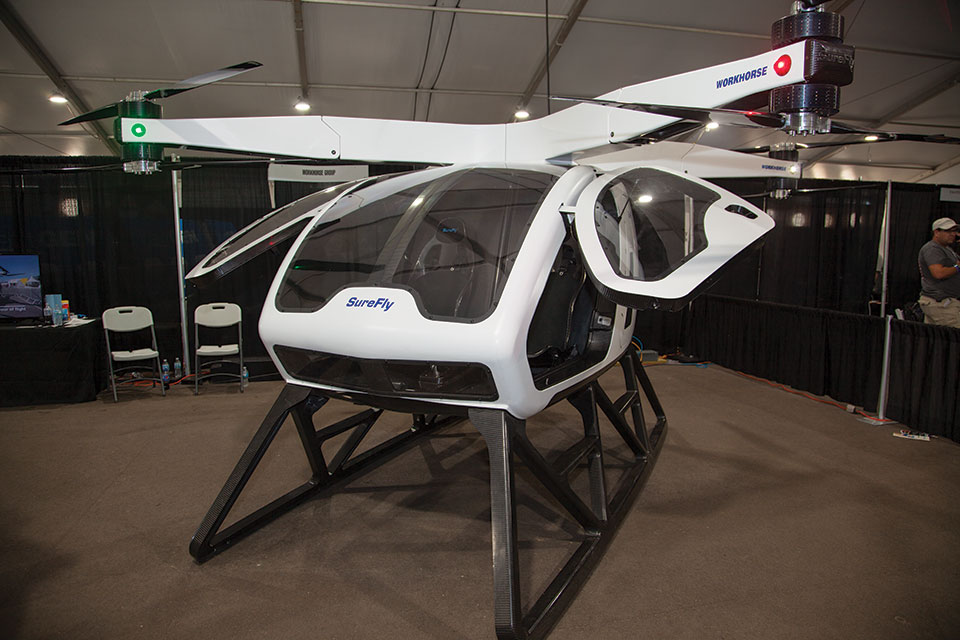Helicopter Roundup
By Randy Dufault and James Wynbrandt
July 29, 2017 - From experimental to fully certificated, and classic to cutting edge, rotorcraft are taking a starring role at EAA AirVenture Oshkosh this year. Here’s a roundup of some of the exciting platforms you may have seen on display this week.
RotorWay
This year, RotorWay celebrates 50 years of delivering rotary-wing flight to the amateur-built aircraft community.
Aside from two examples of classic designs in its booth, the company is showing off improvements to the current A600 kit model and a concept prototype for a certified helicopter called the RW7.
New to the A600 is a turbocharged power option, new lightweight landing gear, improved aerodynamics for the tail rotor, and a complete prebuilt wiring harness that simplifies installation of the electrical system. The changes saved 40 pounds of empty weight. Pricing for a kit containing everything except the radios is $99,886.
The prototype RW7 on display is RotorWay’s entry into the certified helicopter market. Based on proven technologies derived from its kits, the company expects the RW7 to serve both the training and recreation markets at acquisition, and operating costs below that of currently available certified models.
RotorWay’s booth is located just east of the control tower in the Main Aircraft Display area.
Innovator Technologies
Known since 2001 for its Mosquito single-seat helicopter kits, Innovator brought the prototype of its two seat Swift to Oshkosh.
Mosquito variants are available as Part 103 compliant ultralight models, and as experimental amateur-built variants. Which rules apply depends on the chosen model, and on options. Kit prices range from $30,000 to $40,000.
Power for the two-seat Swift experimental model comes from a 185-hp Lycoming O-360. Planned price for the kit is $110,000, and a builder’s assistance program will be available.
Visit Innovator’s booth in the Ultralight/Rotorcraft Display area.
Airbus
With its expansive windows and comfortable cabin, the single-engine Airbus H130 helicopter on display here is popular with air tour operators, charter operators, law enforcement, and emergency medical services (EMS). It’s also used for private VIP transport. The single-pilot rotorcraft can accommodate up to seven passengers, depending on cabin configuration. In service since 1999, in 2012 the H130 was updated with a new transmission, improved anti-vibration and air-conditioning systems, enhanced fuel cell, and automotive style latches that allow cabin doors to be closed, just like a car, reducing wear and tear on the helicopter for tour operators. In EMS applications, the wide cabin can accommodate a stretcher, giving care providers complete access to the patient. Cruise speed is about 130 knots, range is more than 300 nm, and the H130 is priced about $3.6 million. The Airbus pavilion is in the Main Aircraft Display area (427, 436).
Safari Helicopters
Known for its Bell 47 inspired model 400, Safari Helicopters is showing the prototype of its new 500 model.
A core goal for the 500 is faster cruise speeds. The 400’s bubble canopy imposes a number of aerodynamic limits that the 500 is designed to relieve. Hover testing is underway with broader tests beginning in the next month.
Both models share the same mechanical and engine configuration, and pricing for both kits is the same at $142,000 including engine and avionics.
Orders are available at AirVenture 2017 for both models, with model 500 kit deliveries expected to begin within the next three months.
Safari’s booth is located in the Ultralight/Rotorcraft Display area.
Workhorse Group
The SureFly, which made its U.S. debut here at AirVenture, is an in-development, electrically powered, two-place personal helicopter from Workhorse Group, an Ohio company primarily involved in electric propulsion for ground transportation. The SureFly’s four arms extending outward above the cabin each contain two motors driving counter-rotating propellers — one above, one below — at the end of each arm. Much easier to fly than a conventional helicopter, a joystick controls horizontal motion while a simple up and down button controls ascent and descent.
A 200-hp gas-powered turbocharged engine drives a generator that produces electrical power. In the event of an engine problem, a lithium-ion battery can provide five minutes of power, enough for a safe landing. There’s also a ballistic recovery chute as further backup. The company aims to have the displayed prototype ready for tethered flight tests by the end of 2017. Target price for the SureFly is less than $200,000, per Workhorse. The SureFly is on display in the Innovation Center.
SBM Development
Planning to fill a gap in the current helicopter training market, SBM Development has displayed prototype of its RT216 lightweight turbine helicopter.
According to company representatives, the spacious two-seater fills the need for a low-cost option for turbine transition training. Typically, larger four-, five-, and six-place turbine helicopters fill that role with their attendant higher costs. While those higher costs may not seem excessive in the U.S. and Europe, they are unaffordable in other regions of the world.
Plans are in place to certify the craft first under European microlight rules, and later under Part 27 rules.




